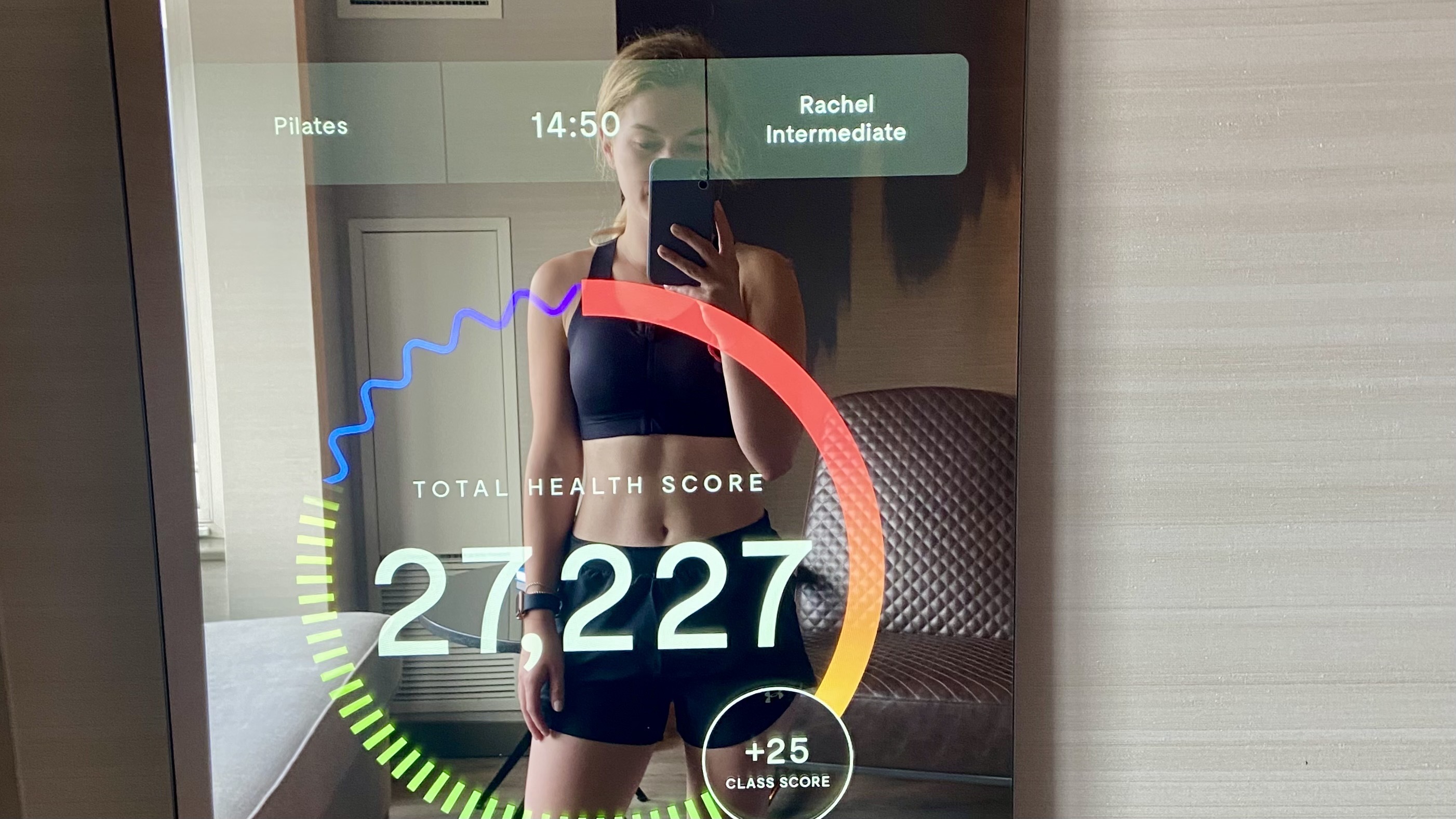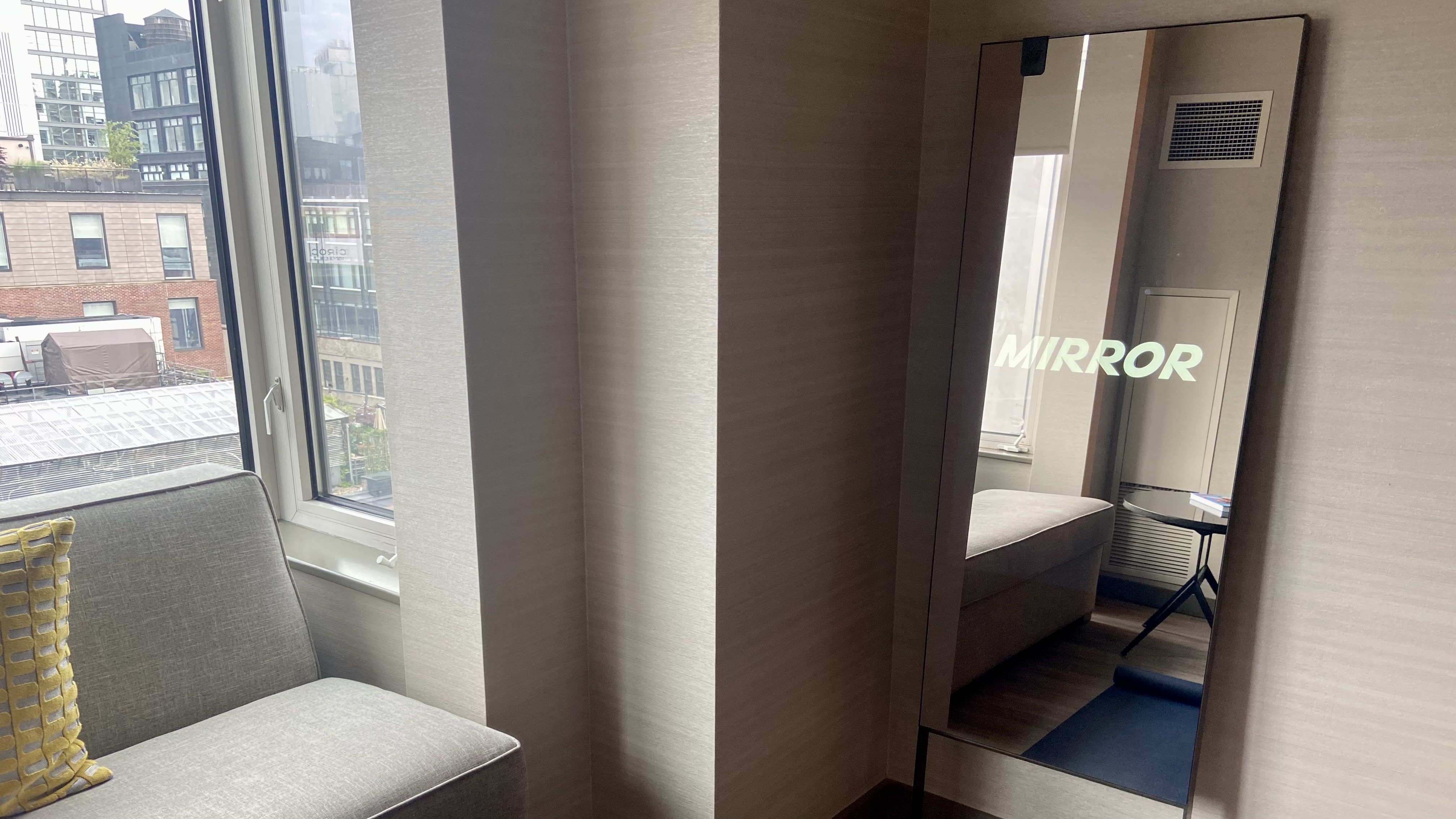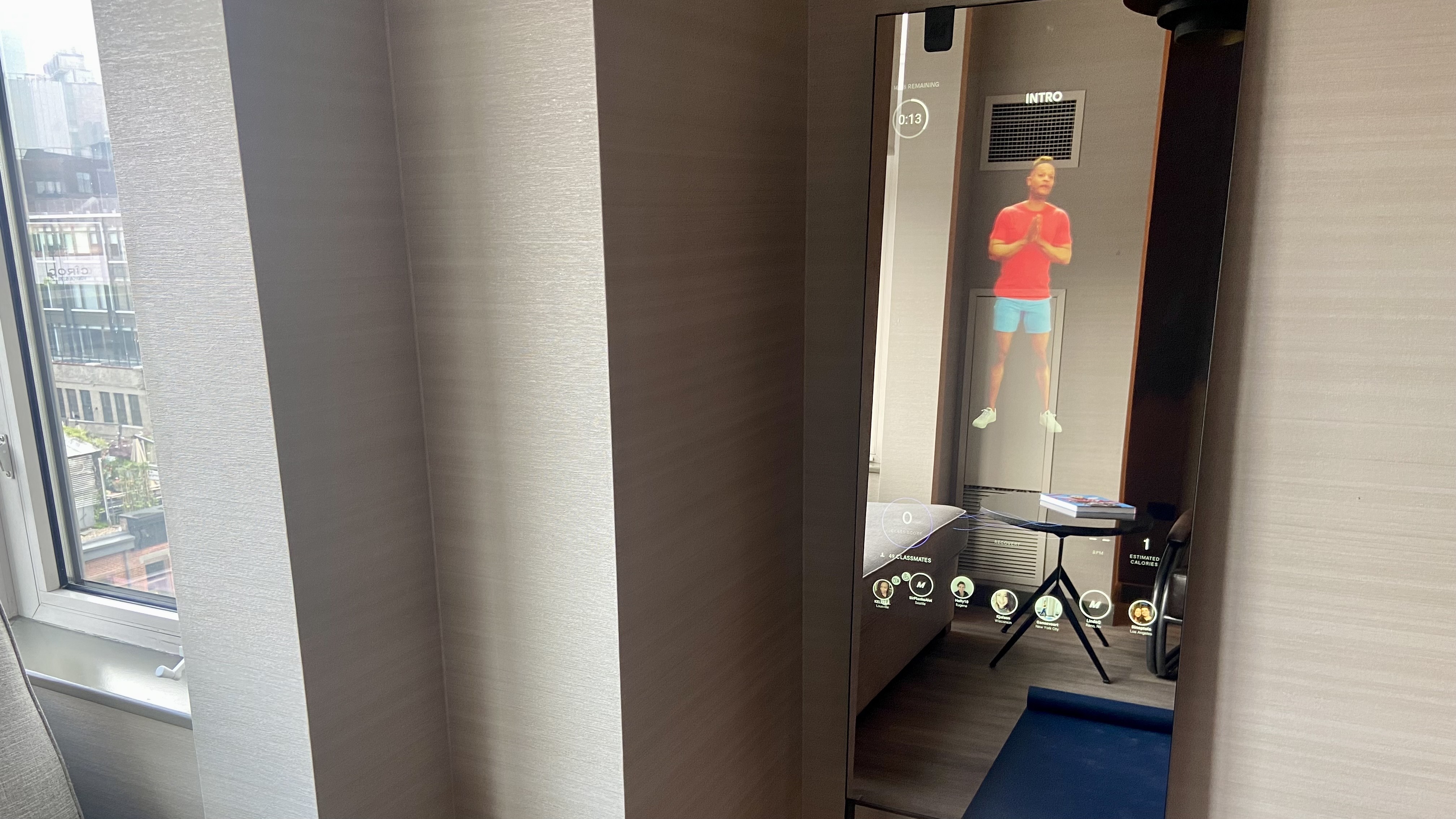If workout mirrors are the fitness trend of the future, I’m finally ready
I’ve always hated the thought of a workout mirror, but I've been converted.

I’ve always hated the thought of a workout mirror. Perhaps it’s the idea of having a personal trainer permanently stationed in my living room or the guilt I’d feel every time I glanced in the mirror and decided not to work out. Either way, I’ve firmly believed that workout mirrors were a fad — a pandemic purchase many would regret as gyms and studios re-opened.
Yet when I checked into my hotel room on a recent trip to find Lululemon’s Mirror stood neatly in the corner, I decided to sync up my phone and give the workout mirror a go. What happened next surprised me — read on to find out more.
Looking for more workout inspiration? Here’s what happened when I tried Miles Teller’s Top Gun bodyweight workout, when I added 100 dead bugs to my routine for a week, and when I tested Daisy Keech’s famous ab workout.
I tried Lululemon’s Mirror — here’s my verdict
The Lululemon Mirror is one of many workout mirrors to hit the market in the past couple of years — it joins competitors like the Fiture smart mirror, the Tempo Studio, and the Tonal. These connected smart mirrors allow you to follow your instructor in real time, while still keeping an eye on your form. Similar to the likes of the Peloton Bike or Peloton Tread, they are designed for fitness enthusiasts who need the motivation of classes to keep them accountable.

At first glance, the Lululemon Mirror looks just, well, like a mirror. Unlike one of the best exercise bikes, it doesn’t make your living room feel like a gym, and when it’s not in use, it doesn’t feel out of place in the home. Yet in a twist that would shock Snow White, the Mirror is actually an impressive piece of technology — it’s got a built-in microphone, a forward-facing camera, and a Bluetooth-enabled LCD screen that allows you to stream on-demand and live workouts.
But why wouldn’t you just put your laptop or iPad next to a mirror and save the money, I hear you ask? As I mentioned before, until trying one myself, I rolled my eyes at the idea of paying thousands of dollars for a mirror, especially when most people who work out at home would know to keep a mirror in sight to check their form. Yet there is a difference between being face-to-face with your instructor when you’re working out, and when connected, the Mirror can show you performance-related data from your connected device on the screen, as well as how long you have left, and the other users taking the class with you. (It’s worth noting, I used an Apple Watch while testing the Mirror; some devices, like Fitbit, can’t be connected).
How long did it take me to be converted? Two Pilates classes and a kickboxing session. Here’s why.
Sign up to get the BEST of Tom's Guide direct to your inbox.
Get instant access to breaking news, the hottest reviews, great deals and helpful tips.
It keeps you motivated
The main selling point when it comes to the Mirror is the huge range of classes — there are thousands to choose from, and the classes cover a wide variety of needs, from yoga and Pilates to kickboxing and HIIT. There are also over 70 live classes streamed to mirrors across the world each week, so you can sign up to join classes to keep yourself accountable.
The classes are available for all levels, and range from 15, 30, 45 or 60 minutes. There are a number of different instructors, who you get to know more as you use the mirror, but unlike Peloton, the instructors aren’t the real reason you’re there — sure, you’ll find some more motivating than others, but the class chat generally sticks to the workout.

Of course, as this brand is owned by Lululemon, you’ll find there’s a wide variety of yoga classes on offer, and you’ll get some serious kit envy. (Here are the best Lululemon leggings on the market to shop right now).
It doesn’t take over your living room
If, like me, you live with a partner who refuses to have an exercise bike or a treadmill in the living room, you’ll know the joys of working out from home when you’re short of space. One of the joys of the Mirror is it’s miniature footprint, although you will need to ensure you’ve cleared some space in front of it to workout.
Unlike other pieces of connected fitness equipment, the Mirror doesn’t have to be attached to the wall — good news for renters.
But it does come at a price
That said, while I was impressed with the workouts and the functionality, fitness tech does seem to come at a price. The Mirror costs $1,495, plus a $39 subscription fee and a $250 installation fee, although at the time of writing this is included in the cost of the Mirror. Compared to a gym membership, this is pretty expensive, especially when there are cheap gym memberships out there. That said, if you’re someone who prefers to take boutique fitness classes, $39 a month is a good deal, especially if you consider the average Barry’s class starts at about $38 per class. I always say gym equipment is only worth it if you use it, and part of the joy of having fitness equipment in your home is that is cuts out the excuses, and the time commuting to and from class.
Of course, one of the benefits of attending a class is that all of the equipment is ready for you when you arrive. With the Mirror, you’ll need to purchase additional weights and home gym equipment. The brand sells smart ankle weights and dumbbells, which pair to the device to provide connection feedback, but you could save your money and shop a pair of the best adjustable dumbbells, best ankle weights, and best resistance bands.
I’d also argue that, if you’re someone who loves the buzz of working out in a room with other people, no matter how good the instructor is, you’re not going to get that from any app or connected piece of equipment. I didn’t love this product because I felt like I was in a SoulCycle or SolidCore class with other women, I loved it because I got a great workout without having to leave my house and if that’s not a sign the pandemic has changed the fitness world, I don’t know what is. Would I install a Mirror into my own home? Not right now, but if this is the direction fitness tech is heading, I’m now on board.

Jane McGuire is Tom's Guide's Fitness editor, which means she looks after everything fitness related - from running gear to yoga mats. An avid runner, Jane has tested and reviewed fitness products for the past five years, so knows what to look for when finding a good running watch or a pair of shorts with pockets big enough for your smartphone. When she's not pounding the pavements, you'll find Jane striding round the Surrey Hills, taking far too many photos of her puppy.
